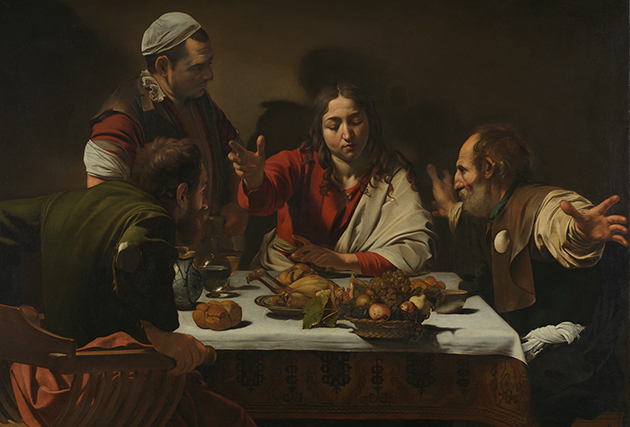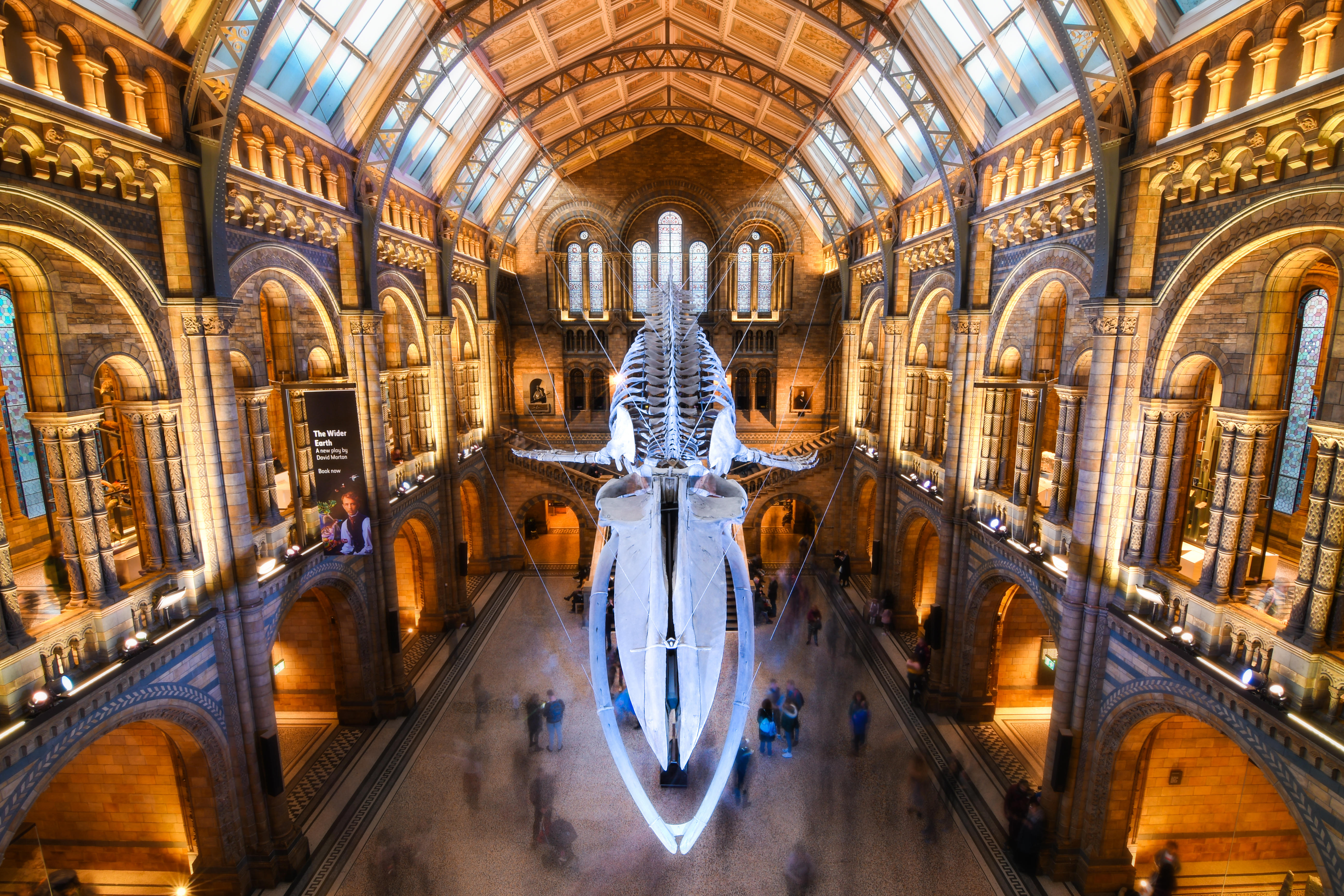My favourite painting: The Bishop of Worcester
The Bishop of Worcester chooses his favourite painting for our Easter Issue


The Supper at Emmaus, 1601, by Caravaggio (1571–1610), 55in by 77in, National Gallery, London
'This glorious painting speaks wonderfully to me of the moment when, in “the breaking of the bread”, the disciples recognise their companion on the Emmaus Road as the risen Jesus. All the sightlines converge on Him. More wonderfully still, the work makes abundantly clear the invitation offered by the Lord Jesus to you and me to join Him at the table. '
'There is a place for us and the outstretched arms of Jesus, and those of one of the disciples, beckon us. They beg us to come and “sit and taste his meat”, as George Herbert put it, and so be drawn into the invincible loving arms of the God whose love is stronger than death.'
Dr John Inge is the Bishop of Worcester
John McEwen comments on The Supper at Emmaus:
'In Luke’s Gospel, Mary and the women closest to Jesus discovered the empty sepulchre that announced the Easter resurrection.
'They told the 11 Apostles (Judas now being dead) ‘and all the rest’ of his disciples, but were not believed. Only Peter ran to see the sepulchre and returned duly astonished. The same day, two disciples—one unidentified, the other Cleophas—walked to the village of Emmaus near Jerusalem.
Sign up for the Country Life Newsletter
Exquisite houses, the beauty of Nature, and how to get the most from your life, straight to your inbox.
'On the road, they were joined by Jesus. Luke 24:16: ‘But their eyes were holden that they should not know him.’ In Emmaus they had supper. 30: ‘And it came to pass, as he sat at meat with them, he took bread, and blessed it, and brake, and gave to them.’ 31: ‘And their eyes were opened, and they knew him.’ Only Luke mentions the supper. It’s often mistakenly assumed that Peter is the gesticulating man in the picture.
'Presumably, it’s Cleophas. Caravaggio was the ultimate pictorial dramatist of the Catholic Counter Reformation. The Protestant Reformation had stripped churches of ‘idolatrous’ statues and pictures. Stern iconography was at the core of the Eastern Orthodox Church’s long-held schism with Catholicism. Caravaggio was in the vanguard of the Counter Reformation’s contrary demand to reach the people through more emotionally engaging religious art.
'The picture is charged with symbolism: bread and wine (the Eucharist), chicken (sacrifice), apples (Original Sin, Man a fallen being since Adam), pomegranates (the Church), Cleophas’s scallop shell, a pilgrim’s token. The basket of fruit may be the forerunner of Caravaggio’s famous painting of that name, ‘the source of all subsequent Roman still-life painting’ (John Spike [b.1951], art historian).'
Country Life is unlike any other magazine: the only glossy weekly on the newsstand and the only magazine that has been guest-edited by HRH The King not once, but twice. It is a celebration of modern rural life and all its diverse joys and pleasures — that was first published in Queen Victoria's Diamond Jubilee year. Our eclectic mixture of witty and informative content — from the most up-to-date property news and commentary and a coveted glimpse inside some of the UK's best houses and gardens, to gardening, the arts and interior design, written by experts in their field — still cannot be found in print or online, anywhere else.
-
 Athena: We need to get serious about saving our museums
Athena: We need to get serious about saving our museumsThe government announced that museums ‘can now apply for £20 million of funding to invest in their future’ last week. But will this be enough?
By Country Life
-
 Six rural properties with space, charm and endless views, as seen in Country Life
Six rural properties with space, charm and endless views, as seen in Country LifeWe take a look at some of the best houses to come to the market via Country Life in the past week.
By Toby Keel
-
 'As a child I wanted to snuggle up with the dogs and be part of it': Alexia Robinson chooses her favourite painting
'As a child I wanted to snuggle up with the dogs and be part of it': Alexia Robinson chooses her favourite paintingAlexia Robinson, founder of Love British Food, chooses an Edwin Landseer classic.
By Charlotte Mullins
-
 The Pre-Raphaelite painter who swapped 'willowy, nubile women' for stained glass — and created some of the best examples in Britain
The Pre-Raphaelite painter who swapped 'willowy, nubile women' for stained glass — and created some of the best examples in BritainThe painter Edward Burne-Jones turned from paint to glass for much of his career. James Hughes, director of the Victorian Society, chooses a glass masterpiece by Burne-Jones as his favourite 'painting'.
By Charlotte Mullins
-
 'I can’t look away. I’m captivated': The painter who takes years over each portrait, with the only guarantee being that it won't look like the subject
'I can’t look away. I’m captivated': The painter who takes years over each portrait, with the only guarantee being that it won't look like the subjectFor Country Life's My Favourite Painting slot, the writer Emily Howes chooses a work by a daring and challenging artist: Frank Auerbach.
By Toby Keel
-
 My Favourite Painting: Rob Houchen
My Favourite Painting: Rob HouchenThe actor Rob Houchen chooses a bold and challenging Egon Schiele work.
By Charlotte Mullins
-
 My Favourite Painting: Jeremy Clarkson
My Favourite Painting: Jeremy Clarkson'That's why this is my favourite painting. Because it invites you to imagine'
By Charlotte Mullins
-
 The chair of the National Gallery names his favourite from among the 2,300 masterpieces — and it will come as a bit of a shock
The chair of the National Gallery names his favourite from among the 2,300 masterpieces — and it will come as a bit of a shockAs the National Gallery turns 200, the chair of its board of trustees, John Booth, chooses his favourite painting.
By Toby Keel
-
 'A wonderful reminder of what the countryside could and should be': The 200-year-old watercolour of a world fast disappearing
'A wonderful reminder of what the countryside could and should be': The 200-year-old watercolour of a world fast disappearingChristopher Price of the Rare Breed Survival Trust on the bucolic beauty of The Magic Apple Tree by Samuel Palmer, which he nominates as his favourite painting.
By Charlotte Mullins
-
 My favourite painting: Andrew Graham-Dixon
My favourite painting: Andrew Graham-Dixon'Lesson Number One: it’s the pictures that baffle and tantalise you that stay in the mind forever .'
By Country Life